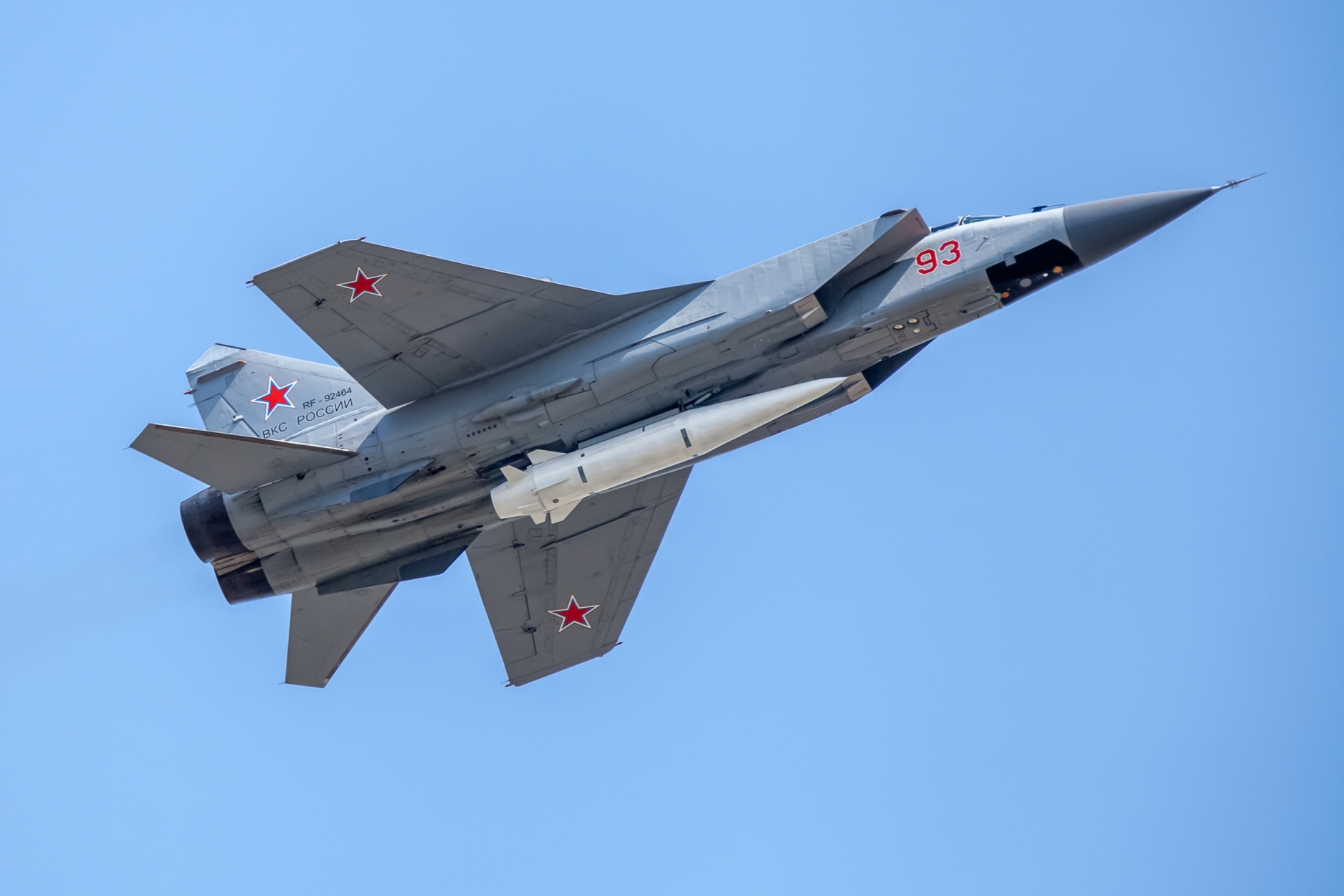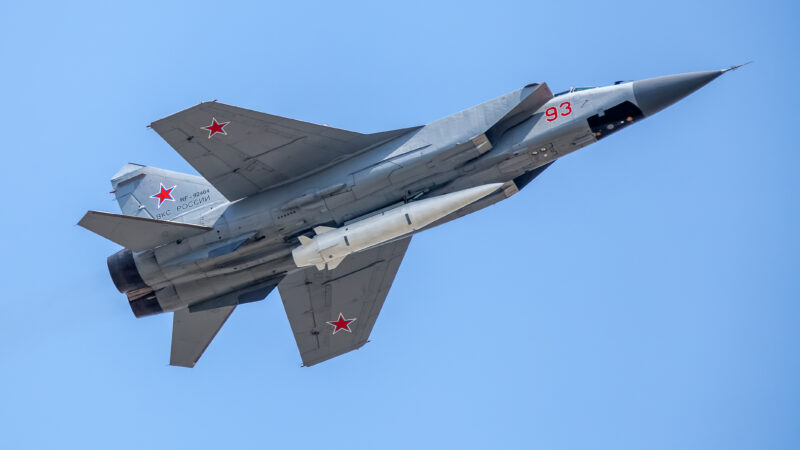Abstract: The analysis of novel Russian nuclear delivery systems is currently tainted by a serious misreading of deterrence theory. Ultimately Russian nuclear messaging affects decision-making within NATO administrations. In substance, if a hitherto neglected ‘other’ was introduced into the formulation of NATO’s deterrence posture, a fuller picture of risks and gains could be realised. Capabilities can have a significant signalling power if the actual intent differs from the other side’s perception and interpretation. As in all communication, the message receiver decides or processes the information according to their experiences, character, and knowledge.
Problem statement: How to understand why the neglect of deterrence theory shapes western fear of Russian nuclear threats?
Bottom-line-up-front: The Russian Federation’s success in its nuclear messaging is a clear result of unwavering internal political engagement with its population while at the same time influencing audiences in western states.
So what?: NATO’s nuclear analysis should consider biases within their analytical work. Russia’s influence operations — also used in the nuclear arena — try to shape our fear perception and, ultimately, how we respond.

Source: shutterstock.com/Dianov Boris
New Russian Delivery Systems?
The Russian Federation claimed to have developed five novel nuclear delivery systems in 2018. Three of these systems – Kinzhal, an air-launched variant of the Iskander 9M723; the Avangard glide-vehicle similar to existing independently targeting warheads; and the new Intercontinental Ballistic Missile SARMAT – have capabilities similar to existing Russian nuclear weapon systems.[1] However, the two other systems, the Poseidon Intercontinental Torpedo and the hypersonic “Skyfall” cruise missile with unlimited range, have led to concern and apprehension within security circles. Specifically, the reported capabilities of the systems have created anxiety regarding Russia’s ability to launch a devastating first strike without the West detecting and/or being able to react.[2]
Public discourse asserts that the intercontinental torpedo and the unlimited-range cruise missile systems are game-changers in Russian-NATO relations.[3] Furthermore, the horrific attributions of devastating nuclear capabilities are the focus of the public imagination and defense analysts alike.[4] Technical details are at the forefront of the analysis of the systems in terms of operational problems and fear attribution. For example, a recent book by former Commander U.S. Army Europe General Hodges argues that deploying and renewing current Russian systems and hypersonic weaponry would diminish the current deterrence setup. This argument presumes the accuracy of the claims of novelty from the Russian side.[5] Indeed, strategists have been so preoccupied with the technical claims of Russia concerning these systems that they have hardly considered more notable and revealing aspects of the systems, including how the Russian side has communicated them. This communication has been significantly shaped by the systems’ sensational respective naming – names which they have received through a notable public relations campaign within Russia.[6]
A recent book by former Commander U.S. Army Europe General Hodges argues that deploying and renewing current Russian systems and hypersonic weaponry would diminish the current deterrence setup. This argument presumes the accuracy of the claims of novelty from the Russian side.
The naming process of the weapons was conducted as a televised event over several weeks in 2018. The naming, for instance, of the NATO-designated ‘Skyfall’ cruise missile is insightful. The Russian name for the cruise missile is ‘Burevestnik’ (stormy petrel, a type of bird), based on a poem of the same name by Maxim Gorki. The poem describes the adventures of the stormy petrel and inspires national pride. During the Soviet Union, the poem was a mandatory curriculum in schools and led to schools and even chocolates being named after the imaginary bird. The poem describes the bird not backing down even under dire conditions. Clearly, a name of such national patriotic significance has not been chosen accidentally.
Communication is a weapon that can ensure the Russian motherland’s safety. This naming process highlights that the weapons are more intended for the Russian domestic audience and that the external communication aspect is secondary. Burevestnik and the other weapon systems are thus meant to uphold the greatness of the Russian federation in the minds of the population and strengthen the cohesion of Russia.
Communication is a weapon that can ensure the Russian motherland’s safety.
NATO analysts should renew their emphasis on the non-technical strategic level when assessing developments within the realm of deterrence and not rely on the elusive analysis of capabilities for the sake of capabilities. Military decision-making, if solely operationally orientated, cannot solve the challenges of nuclear deterrence, and can even risk nuclear escalation. As a result of operational over-emphasis, three aspects of the debate are currently ignored: the perception of new development by NATO and its analytical community; the problematic tendency of western experts to take mutually assured destruction (MAD) for granted; and the disregard for the escalation theories of the 1950s and 1960s by analysts. Aside from MAD, other concepts, such as the use of tactical nuclear weapons, are seldom discussed. Thus, it seems that there is an inherent neglect of the current strategic calculus at the heart of nuclear deterrence theory in western states, which is being ignored in the current context.
The Perceived Game-Changing Nature
Focusing on the purported horrors that the ‘Poseidon’ and the ‘Skyfall’ could inflict oversimplifies the strategic problems associated with analysing their impacts on the current security calculus and tends to result in an operational rather than a strategic assessment. To elevate the analysis, one must establish a deeper understanding of the Russian strategic considerations or risk, strengthening the operational analysis favoured by NATO. This follows the Russian myth-building of a ‘wonder weapon’ by allowing the technical features to take centre stage.[7] Russia is counting on NATO to enhance the narrative. The Russian Ministry of Defence’s crowdsourced creative process to find names for the new systems shows Russia’s prioritization of superiority in the information domain. This crowdsourced approach is intended to increase the general support for its nuclear deterrent. It highlights that weapons are central to gaining popular support for Russia’s great power status.
The problematic debate about new Russian systems is based on their supposedly novel technical features and their seemingly devastating effects.[8] Commentators ignore the devastating potential of weapons already in their inventory, such as MIRVed (Multiple Re-Entry Vehicle) or MARVed (Maneuverable Reentry Vehicle) on Intercontinental Ballistic Missiles (ICBMs).[9] If the Russian torpedo and cruise missiles affect NATO’s deterrence posture, this discourse is conducted in isolation and does not inform public debates. Additionally, Russia’s deterrence situation is seldom discussed. Instead, former NATO military commanders and current ones typically apply their understanding of the conventional operational realm to strategic debates within the nuclear realm. This problem stems from western socialisation in the military thinking of the 1980s. As Sir Hew Strachan observes about the operational thinking of the 1980s: “that was precisely the attraction of the operational level of war, that it was developed in a policy-free zone, in which military expertise was unfettered and where armies reasserted their authority over war’s conduct”.[10] Western strategists and military leaders do not consider the policy side of operational concepts or propositions. Thereby strategists overlook that the notion of winning in a nuclear world does not abide by the same rules as conventional conflict.[11]
If the Russian torpedo and cruise missiles affect NATO’s deterrence posture, this discourse is conducted in isolation and does not inform public debates. Additionally, Russia’s deterrence situation is seldom discussed.
The Poseidon nuclear torpedo is intended as a strategic message and has no operational relevance at its core. Strategic nuclear weapons, which can hit indiscriminately and cannot be used in a Counter-Force role, are intended to create fear in other states.[12] This fear persuades them to refrain from acting against Russia. In turn, Russia fears the potential of allied missile defence systems which drives the development to circumvent the threat of such systems – even if these systems could not actually defend against a full-scale Russian nuclear attack with ICBMs. Thus, NATO and US ambitions for an efficient missile defence system are directly linked to the Russian decision to field new weaponry.[13]
However, strategic deterrence should never be solely attributed to nuclear forces’ capabilities. The Nuclear Planning Group (NPG) should emphasise the psychological interplay between perceived novel capabilities and the fear derived from the threat of those capabilities. In substance, if the hitherto neglected psychological factor of the ‘other’ was introduced into formulating NATO’s deterrence posture, a complete picture of gain and risk could be realised. Capabilities can have a significant signalling power if the actual intent differs from the other side’s perception and interpretation. As in all communication, the message receiver processes the information according to their experiences, character, and knowledge base. Additionally, the information is then processed by a wider security community which can act as an echo chamber to spread fear further or–at times–to reduce it.
Introducing new categories of delivery systems offers an insight into the fear perception of the Russian Federation. The actual origins of both systems are rooted in fear of losing an arms race in regular missile technology, disregarding whether this was based on realistic losses or intended fear.
Introducing new categories of delivery systems offers an insight into the fear perception of the Russian Federation.
Military analysts responded with surprise and shock after Russian state television’s ‘accidental’ leak of the new Poseidon 2M39 Torpedo.[14] In terms of its pure destructive power, it appears genuinely terrifying. The Poseidon can reportedly carry a nuclear warhead with up to 100 MT with an intercontinental range at speeds greater than any existing submarine system. Additionally, due to its claimed ability to dive deeper than most submarine detection systems operate, the torpedo is probably extremely hard to detect.[15] A few commentators have further voiced their concern that Poseidon could be prepositioned on the seabed of NATO member states, thus reducing detection and reaction times. In particular, if the torpedo is used to create a tsunami, it could potentially threaten the facilities of NATO’s nuclear deterrence submarines, which still form the second-strike capability.[16] Thus, the risk of a surprise effect, which could be considered in a counter-force mission against a strategic submarine base, is negligible. Even if the initial strike of Poseidon were a surprise attack hitting naval installations, it would not be able to take out the secure second-strike nuclear options held by NATO states. A surprise attack would trigger a nuclear response by NATO’s air, land, and sea-based nuclear assets and thereby assure that any advantage gained by this strike would be undone. Thereby following the basic premise of nuclear deterrence theory, Mutually Assured Destruction.
On the contrary, the nuclear-powered cruise missile 9M730 ‘Burevestnik’ is claimed to be a sub-sonic, nuclear-powered, sea-skimming, nuclear-tipped cruise missile with unlimited range. Furthermore, the ‘Burevestnik’ supposedly can freely choose its trajectory to the target through its supposed infinite range. Yet none of these claims has been independently verified, and recent accidents should caution against accepting these assertions as fact.
Thus, looking at Poseidon and the ‘Burevestnik’ from a purely strategic angle is essential. The two systems will not change the underlying principle of nuclear strategy and deterrence: strategic stability.
The Fallacy of Mutually Assured Destruction within NATO’s Strategic Perception
Another issue surrounding the reported new delivery systems is the assumption of the concept of mutually assured destruction. All western deterrence policies have strategic stability as their nominator.[17] The concept of MAD is based on the publicly accepted notion that nuclear war will end in a showdown of the nuclear powers involved and total annihilation. The mythology surrounding the world’s end in a nuclear crisis coined the public and semi-official term MAD. For the idea of MAD to work, one needs to rely on the basic assumption of massive retaliation on both sides.[18] Though NATO tried to change reliance on Massive Retaliation with the introduction of Flexible Response or MC14/3, it did not change the notion in the minds of many decision-makers and the broader public that a nuclear war would entail the employment of all nuclear forces.[19], [20] As Freedman points out, strategic nuclear weapons have far greater relevance on the political and psychological level than being directly operationally relevant.[21]
The mythology surrounding the world’s end in a nuclear crisis coined the public and semi-official term MAD. For the idea of MAD to work, one needs to rely on the basic assumption of massive retaliation on both sides.
In this context, it is crucial to consider the impact of uncertainty on the decision-makers through Ballistic Missile Defence. The US’s withdrawal from the Anti-Ballistic-Missile (ABM) Treaty in 2001 led to the perceived Russian need to counter the imbalance by creating new capabilities on the Russian side to circumvent these new defences. In this context, it is irrelevant if ABM would physically affect the calculus of a nuclear exchange. Rather, it is the perception of the threat itself which dictates the experienced reality. Historical experiences support these threat perceptions. ABM capabilities have partly fixated Russian nuclear strategic thinkers because the Strategic Defence Initiative (SDI) narrative still lingers in the minds of its strategic planners. Though the SDI concept was simply a pipe dream which could have not been realized in technical or financial terms by the USA, it left however a profound impression on the imagination of Soviet/Russian planners.[22] In conclusion, ABM capabilities, from a Russian perspective, threaten strategic stability and thus need to be thwarted by new means to ensure the psychological value of its nuclear deterrence forces.[23]
The ABM (Anti-Ballistic Missile) Treaty was born out of the interest of both sides to be vulnerable to each other’s nuclear attacks, thus identifying mutual vulnerability as a sign of stability. Mutual vulnerability limited to an extent the inherent security dilemma between the USA as the leading western power and Russia. Doing so prohibited any side from gaining an incentive for a first strike, a scenario in which one side could think a nuclear war could be won. It was the realisation and hope that mutual vulnerability ultimately provides incentives to seek a peaceful solution to an international crisis. Thus, while Green argues that Mutually Assured Destruction (MAD) is a myth, it nevertheless shaped and shapes our understanding of the nuclear realm.[24]
Russia’s armed forces, despite their modernisation efforts, lag behind NATO states. Thus, the Russian nuclear doctrine from 2020 emphasises using sub-strategic nuclear weapons in response to conventional aggression.[25] This nuclear option is a strategic reaction to the problem created by the US’s development of non-nuclear kinetic strike options that were previously only targetable with nuclear weapons.[26] During the 1960s and 1970s, NATO had the concept of Flexible Response, which emphasised the application of nuclear weapons early on to establish escalation dominance.[27] The decision was taken due to the conventional superiority of the Warsaw Pact states at the time. Comparing the current Russian conventional weakness within the war in Ukraine with Russia’s nuclear doctrine from 2020 reveals a Russian impulse to remedy its own weaknesses by threatening nuclear war.[28] Russia’s strategic forces uphold a complete spectrum triad of sea-, air- and land-launched strategic systems and ultimately represent the only type of defence at the same level as the West.[29] Despite Russia having a secure second-strike capability, the current efforts in advancing ABM technology could undermine that capability. The ABM-Treaty, cancelled in 2001, was seen as the capstone of the deterrence architecture by Russia.[30]
During the 1960s and 1970s, NATO had the concept of Flexible Response, which emphasised the application of nuclear weapons early on to establish escalation dominance.
Since then, the Russian Federation has justified many of its deployments of new weapon systems as simply seeking to circumvent US or Allied ABM systems and reinstating mutual vulnerability. For example, the infamous Iskander-M (SSC-8 Screwdriver) deployment to Kaliningrad in 2017 was announced as a countermeasure to the deployment of Ballistic Missiles Defences. Earlier, the missile system was announced to replace the ageing SS-21 Scarab.[31], [32] Surprisingly, these concerns are not taken seriously, especially since NATO’s nuclear posture is based on MAD and escalation methodology.[33] Along this line of definitions, we have to assume that the classic instruments of first, and second-strike capabilities hold in today’s deterrence settings.
Strategic Calculus
The current misunderstanding of nuclear deterrence theory was created by a combination of simplification by decision-makers, a lack of understanding of the strategic calculus, and the addition of new systems to the existing deterrence system.
NATO’s nuclear forces consist mostly of the US nuclear triad of bombers, submarines, and ICBMs. They are supplemented by France’s air- and sea-launched assets and the UK’s nuclear submarine force. All three states rely on continuous at-sea deployment (CASD) patrols for a reliable second-strike component. The surprise effect, which could be considered in a counter-force mission against a strategic submarine basis, is negligible in terms of the overall structure of the nuclear force, which has a huge secondary strike option. The operation of CASD provides a constant and reliable second-strike option.[34] Even more so, the ICBM leg of the US triad would be a formidable immediate response option, particularly within the concept of launching on warning (LOW).
NATO’s nuclear forces consist mostly of the US nuclear triad of bombers, submarines, and ICBMs. They are supplemented by France’s air- and sea-launched assets and the UK’s nuclear submarine force.
The contention that the two new Russian systems ought to be interpreted as a strategic game-changer is highly questionable. The problem is best summed up by the analysis of Brodie regarding the study of deterrence which still holds today: “It should be obvious that what counts in basic deterrence is not so much the size and efficiency of one’s strike force before it is hit as the size and condition to which the enemy thinks he can reduce it by a surprise attack”.[35]A surprise attack with the new systems cannot alter this balance as long as a high quantity of nuclear forces would survive; for the most part, the systems do not hold any value in the counter-force role.
The three basic building blocks of nuclear deterrence are capabilities, intent and communication.[36] Nuclear signalling is essential to showcase the credibility of the capability and how credible the decision to use nuclear weapons would be. However, the signalling problem arises due to the structure of the different states and their strategic culture.
The signalling information is then processed by a more comprehensive array of experts and analysts who abide by a specific organisational culture aside from having their own biases. The information must be found amidst the general intelligence input collected in this process. This culture results from the strategic culture of a given state and the intelligence priorities set by its leadership.[37] The decision-maker receives their staff’s processed intelligence and information and decides on their experiences, knowledge base, and emotional state.[38] In this context, fear is the most underlying and often forgotten feature of nuclear deterrence. None of the above would matter without instilling an emotional reaction of fear in the other state. Yet, fear is not an objective notion but depends on the individual or the organisation culture of specific institutions such as Allied Command Transformation (ACT) or NATO HQ. Emotion is then used to influence and ultimately change the other side’s behaviour.[39] The intelligence collection cycle aspect of information management within foreign and defence policy highlights the danger that information about intentions is collected in too narrow boundaries and does not accurately depict the “fear factor”.
Yet, fear is not an objective notion but depends on the individual or the organisation culture of specific institutions such as Allied Command Transformation or NATO HQ. Emotion is then used to influence and ultimately change the other side’s behaviour.
Thus, what matters is the fear this information induces in the intelligence and military sphere, thanks to the operational analysis of the Poseidon Weapon System. If the information is repeated often enough, the more likely that validity will not be called into question. In doing so, with the help of weapon systems such as Poseidon, Russia achieves what it intends to, spreading fear in the minds and hearts of those who should be adapted to take it as part of the deterrence interaction.
Conclusion
The Russian Federation’s nuclear messaging and signalling is a matter of great controversy.[40] The Poseidon torpedo and the Burevestnik cruise missile examples showcase the problematic tendency to view nuclear capabilities solely in the operational realm according to their designated and attributed technical details. Communication ought to be analysed regarding its supposed target audiences, especially since Russia’s nuclear strategic position is its last tangible great power status symbol in world politics. Due to the information space becoming a battlespace in its own right, capabilities cannot be viewed solely in operational terms but must also account for their strategic sense. The Poseidon and Burevestnik systems do not change the general logic of nuclear deterrence as a safeguard option, only the decision-maker’s perspective of the strategic context.
Severin Pleyer is an Officer in the German Bundeswehr and a Research Fellow at German Institute for Defence and Strategic Studies. He has authored several works on the issues of nuclear strategy and nuclear warfighting. The views expressed in this article are those of the author. They do not necessarily correspond to those of the Bundeswehr.
[1] Pavel Podvig, Russia’s Current Nuclear Modernization and Arms Control, in: Journal for Peace and Nuclear Disarmament 1 (2), 256–267. DOI: 10.1080/25751654.2018.1526629.
[2] Leah Walker, Nuclear-Powered Cruise Missiles: Burevestnik and its Implications, ed. by Journal of Science Policy & Governance (Volume 16, Issue 01), October 24, 2022, available online at https://www.sciencepolicyjournal.org/article_1038126_jspg_16_01_11.html.
[3] “Russia reveals giant nuclear torpedo in state TV ‘leak’,” BBC News, November 12, 2015, last accessed June 14, 2021, https://www.bbc.com/news/world-europe-34797252.
[4] Frank G. Klotz and Alexandra T. Evans Modernizing the U.S. Nuclear Triad: The Rationale for a New Intercontinental Ballistic Missile (RAND Corporation 2022), 8.
[5] John R. Allen, F. B. Hodges and Julian Lindley-French, Future war and the defence of Europe (Oxford: Oxford University Press 2021), 229-33.
[6] “Kraken? Russians get mythical in contest to name nuclear weapons,” The Guardian, March 03, 2018, last accessed June 17, 2021, https://www.theguardian.com/world/2018/mar/03/russia-nuclear-arsenal-name-kraken-thaw-sanction-contest.
[7] Allied Transformation Command, “Regional Perspective Report on Russia: Strategic Foresight Analysis,” NATO, 41, https://www.act.nato.int/application/files/9816/1350/4281/regional-perspectives-2021-01.pdf.
[8] Idem.
[9] Muhammad Y. Naseem, “Role of MIRV Technology for Stabilizing Deterrence in the Second Nuclear Age,” The International Journal of Intelligence, Security, and Public Affairs 20/3 (2018).
[10] Hew Strachan, The direction of war: Contemporary strategy in historical perspective (eng) (Cambridge: Cambridge Univ. Press 2013), 213.
[11] Everett Dolman, Pure Strategy: Power and Principle in the Space and Information Age (eng) (Hoboken: Taylor and Francis 2012).
[12] Harden Ortner, “Optionen nuklearer Strategie in komplexen globalen Strukturen,“ The Defence Horizon Journal, October 10, 2022, www.thedefencehorizon.org/post/optionen-nuklearer-strategie-in-komplexen-globalen-strukturen-1.
[13] Driss Larafi, “The Elusive European Nuclear Deterrence,” The Defence Horizon Journal, August 01, 2022, www.thedefencehorizon.org/post/the-elusive-european-nuclear-deterrence.
[14] Kyle Mizokami, “Russia Is Still Testing Its Terrifying Apocalypse Torpedo,” Popular Mechanics, April 14, 2021, last accessed June 13, 2021, https://www.popularmechanics.com/military/weapons/a36110992/russia-poseidon-apocalypse-torpedo-updates/.
[15] Timothy Wright (2022): Russia’s Poseidon poser for arms control and naval defence, available online at https://www.iiss.org/blogs/military-balance/2020/07/russia-poseidon-arms-control-naval-defence, updated on October 24, 2022.
[16] SIPRI, SIPRI YEARBOOK 2021: Armaments, disarmament and international security ([S.l.]: OXFORD UNIV PRESS 2021), 342.
[17] Colin S. Gray, Nuclear strategy and national style (eng) (Lanham, Md.: Hamilton Press 1986), 133.
[18] Brendan R. Green, The revolution that failed: Nuclear competition, arms control, and the Cold War (Cambridge: Cambridge University Press 2020), 21.
[19] Francis J. Gavin, Nuclear statecraft: History and Strategy in America’s Atomic Age (New York, NY: Cornell University Press 2015), 30–31.
[20] Hossein Amirsadeghi and Coral Bell (eds), Strategic thought in the nuclear age (eng) (London: Heinemann 1979), 9.
[21] Lawrence Freedman and Jeffrey H. Michaels, The evolution of nuclear strategy, Fourth edition / Lawrence Freedman, Jeffrey Michaels (Basingstoke: Palgrave Macmillan 2019), 352-353.
[22] Lawrence Freedman and Jeffrey H. Michaels, The evolution of nuclear strategy, Fourth edition / Lawrence Freedman, Jeffrey Michaels (Basingstoke: Palgrave Macmillan 2019), 352-353, Schuster 2020), 171.
[23] Thérèse Delpech, Nuclear deterrence in the 21st century: Lessons from the Cold War for a new era of strategic piracy (eng) (Santa Monica, CA: RAND 2012), 131.
[24] Idem.
[25] Burkhardt Meissner and Severin Pleyer, “Zur Nuklearstrategie Russlands,“ last accessed June 13, 2021, https://gids-hamburg.de/zur-nuklearstrategie-russlands/.
[26] Francis J. Gavin, Nuclear weapons and American grand strategy (Washington, D.C.: Brookings Institution Press 2020), 221.
[27] [NATO Archiv], Final Decision on MC14/3A Report by the Military Committee and the Defence Planning Committee on for the defense of the North Atlantic Treaty Organization Area, NATO- Military Committee.
[28] Clara-Anna Arndt and Liviu Horovitz, Russia’s Catch-all Nuclear Rhetoric in Its War against Ukraine, ed. by Stiftung Wissenschaft und Politik (SWP), Berlin, available online at https://www.swp-berlin.org/en/publication/russias-catch-all-nuclear-rhetoric-in-its-war-against-ukraine, updated on 10/24/2022, checked on 10/24/2022.
[29] Bettina Renz, Russia’s military revival (eng) (Cambridge, UK, Medford, MA: Polity 2018), 191.
[30] Mizin Victor, “Russia’s Approach to the U.S. Missile Defense Program | NTI,” July 01, 2021, last accessed July 02, 2021, https://www.nti.org/analysis/articles/russias-approach-us-missile/.
[31] Tom Nichols, Douglas Stuart and McCausland Jeffrey D. (eds), Tactical Nuclear Weapons and NATO (2012).
[32] Missile Threat, “9K720 Iskander (SS-26) | Missile Threat,” August 02, 2021, last accessed September 21, 2021, https://missilethreat.csis.org/missile/ss-26-2/.
[33] Korda, Matt; Erästö, Tytti (2022): Time to factor missile defence into nuclear arms control talks | SIPRI. Available online at https://www.sipri.org/commentary/topical-backgrounder/2021/time-factor-missile-defence-nuclear-arms-control-talks, updated on 10/24/2022, checked on 10/24/2022.
[34] Austin Long and Brendan R. Green, “Stalking the Secure Second Strike: Intelligence, Counterforce, and Nuclear Strategy,” Journal of Strategic Studies 38/1-2 (2015).
[35] Bernard Brodie, Strategy in the missile age (eng) (Princeton, N.J: Princeton University Press 1959), 281.
[36] Frank C. Zagare and D. M. Kilgour, Perfect deterrence (eng), Cambridge studies in international relations 72 (Cambridge, UK, New York, NY: Cambridge University Press 2000), 101–102.
[37] John A. Gentry and Joseph S. Gordon, Strategic warning intelligence: History, challenges, and prospects / John A. Gentry and Joseph S. Gordon (Washington, D.C.: Georgetown University Press 2019), 12.
[38] Bradley A. Thayer, “Thinking about Nuclear Deterrence Theory: Why Evolutionary Psychology Undermines Its Rational Actor Assumptions,” Comparative Strategy 26/4 (2007), 313–315.
[39] Paul K. Davis, J. M. Gilmore, David R. Frelinger, Edward Geist, Christopher K. Gilmore, Jenny Oberholtzer and Danielle C. Tarraf, Exploring the Role Nuclear Weapons Could Play in Deterring Russian Threats to the Baltic States (RAND Corporation 2019), 7–8.
[40] Leah Walker, Nuclear-Powered Cruise Missiles: Burevestnik and its Implications, ed. by Journal of Science Policy & Governance (Volume 16, Issue 01), available online at https://www.sciencepolicyjournal.org/article_1038126_jspg_16_01_11.html, updated on 10/24/2022, checked on 10/24/2022.






